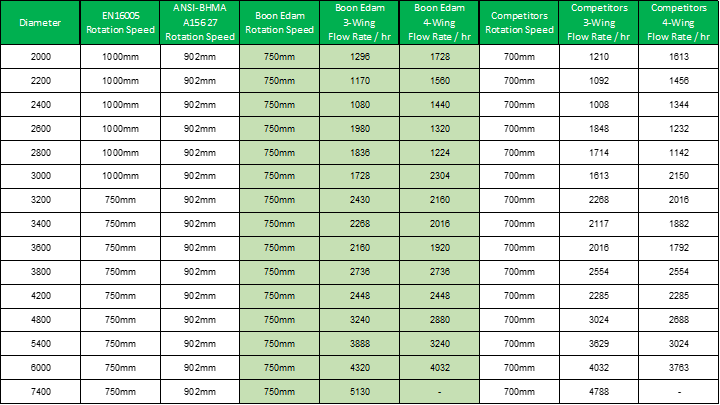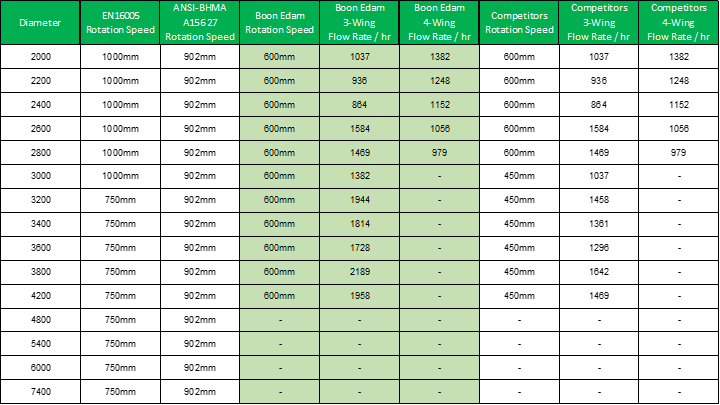Boon Edam Blog | October 2021
With Revolving Doors often installed at the main entrance of hotels, corporate headquarters, multi-use office buildings, shopping malls, and residences, it is vital to create that wow factor, maximise the user's experience and create that all-important first impression that lasts.
Boon Edam can provide a revolving door to meet your requirements at almost any diameter and height. You could consider anything from a framed revolving clad with stainless steel, antique brass, or marine-grade teak to a frameless all-glass revolving door with only a 20 mm trim to retain the horsehair seal.
.png?width=2880&name=MicrosoftTeams-image%20(15).png)
FACTORS TO CONSIDER AND UNDERSTAND WHEN IT COMES TO CREATING THE PERFECT ENTRANCE:
- Design
- Materials
- Building use
- Location of the building
- Orientation of the building
- Age range of the users
By focusing on the actual rotation speed of a revolving door, this blog intends to help you understand what factors dictate the rotation speed of a revolving door and will help you realise that smaller is not necessarily smarter, and bigger is not necessarily better for the user. We believe this will help you avoid making common mistakes and enhance your design, maximise the user experience, enhance building efficiency, and allow you to achieve that perfect entrance.
REVOLVING DOOR STANDARDS
Boon Edam manufacture revolving doors around the world to fully comply with the following standards:
- European Standard EN 16005:2012 - Power & Manual Operated Pedestrian Doors
- American Standard ANSI-BHMA A156 27:2019 - Power & Manual Revolving Pedestrian Doors
Both standards detail two key areas:
- Maximum rotation speed of a revolving door.
- Maximum dynamic / obstruction force when a revolving door impacts with the user.
UNDERSTANDING ROTATION SPEEDS
Quite simply, the following standards each detail the maximum allowed rotation speed for a revolving door.
The reference point is taken at the leading edge of the door leaf.
- European Standard EN 16005:2012
Section 4.7.1.1 - details a maximum rotation speed of 1000mm / second for diameters up to 3000mm, and 750mm / second for diameters exceeding 3000mm. - American Standard ANSI-BHMA A156 27:2019
Section 5.2 details the maximum allowable speed for automatic revolving doors for all diameters = 902mm (35.5 inches) / second.
Standard Size Revolving Door Table
For information purposes, revolving door heights are up to 2800mm

All flow rate figures quoted are theoretical and for information purposes only.
UNDERSTANDING DYNAMIC FORCE / OBSTRUCTION FORCE
For safety reasons, the dynamic / obstruction force allowance is required where a revolving door impacts with the user; in most cases for oversized revolving doors meeting the dynamic / obstruction force requirement will override and reduce the maximum rotation speed of a revolving door to achieve the required dynamic / obstruction force.
- European Standard EN 16005:2012
Section 4.6.7.2 details the value of dynamic force generated by the door set leaf when impacting a person or an obstacle shall not exceed 150N and should reduce to less than 80N after 5 seconds.
- American Standard ANSI-BHMA A156 27:2019
Section 14.1 details that the force required to prevent a stopped revolving door from rotating should not exceed (50lbf) 222N.
For standard matrix sized revolving doors Boon Edam already has test reports and comply with the rotation speed and dynamic / obstruction force standards.
For oversized revolving doors Boon Edam have a dedicated team in Holland who assess each oversized door proposal individually. It is here that our team determine what rotation speed is required to achieve the dynamic / obstruction force requirements. It is also important to note Boon Edam work on a minimum rotation speed of 600mm / second, with oversized doors this will often require a second drive to ensure safety, reliability, efficiency, and the user experience is not compromised.
From our experience, a rotation speed slower than 600mm / second will frustrate the user, forcing the user to break stride, stop and shuffle through the door.
Oversized Revolving Door Table
For information purposes, revolving door heights are above 2800mm

All flow rate figures quoted are theoretical and for information purposes only.
AVOIDING COMMON MISTAKES
Four key questions that should be asked are:
- What is the minimum rotation speed of the proposed revolving door?
For oversized revolving doors the maximum rotation speed is irrelevant, actual rotation speed is key. - What is the actual flow rate of the proposed revolving door?
This is vital to ensure the efficiency of the building, and to maximise the user experience. - What is the maximum occupancy of a building?
Knowing what the maximum occupancy of any building is key to providing the correct number of doors. - What are the traffic requirements of a building?
Calculating any peak traffic requirements of any building is key to providing the correct door.
At Boon Edam we provide a no-obligation service to discuss in detail your design requirements and aesthetic requirements. We can tailor-make a presentation to meet any of your requirements.
If you are curious to learn more about how we can help you make the right decision regarding installing your revolving door, please reach out to your local Entry Expert.
